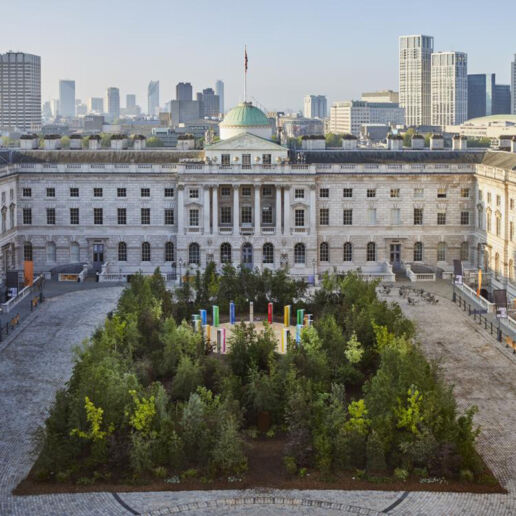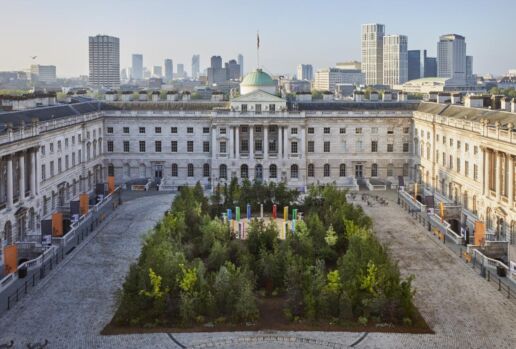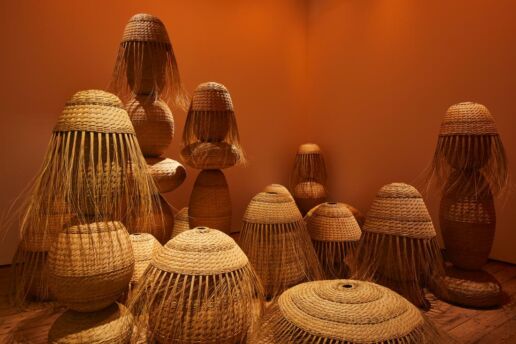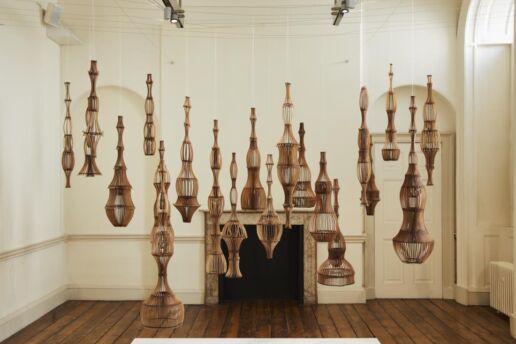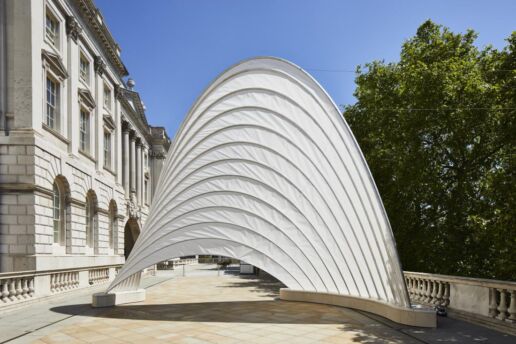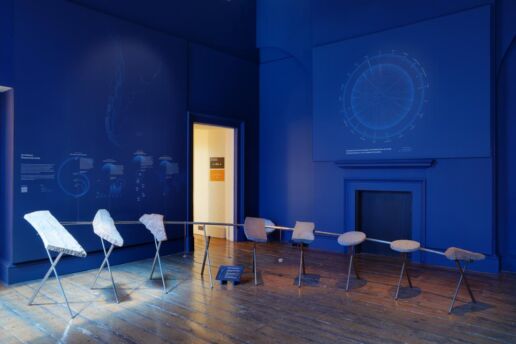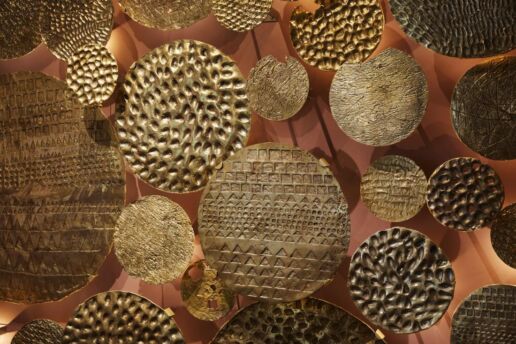The latest from the London Design Biennial
This year, London is enjoying a breath of fresh air with the Design Biennial which introduced a new and thought-provoking perspective to the concept of design.
Britain’s new trend-setting Design Biennial took place at the neo-classical Somerset House in the heart of London. This edition of the event was constructed on the theme of ‘resonance’ and we hope that its message vibrates off the historical façade of Somerset House and resonates with humanity.
Today’s biennials are international showcases of contemporary art that take place every two years. In the global arena of art and design; there are more than 100 biennials around the world competing for acclaimed curators and famous designers and artists in cities such as Venice, Sao Paulo, Istanbul, Moscow and Sydney. These biennials have emerged as a source pride, promoting cultural tourism and generating capital and income.
Established in 2016 by Sir John Sorrell CBE and Ben Evans CBE, the London Design Biennale symbolises a passion for creating universal solutions to issues that concern everyone. Organised in June for the third time this year, the biennial focuses on promoting the global role of design and international collaborations. Its rooms and garden packed with artwork; Somerset House boasts one of the most beautiful courtyards in Europe.
The resonance of design
Curated by art director Es Devlin, the biennial delves into the theme of ‘resonance’ which made me ponder on my knowledge on the topic.
In the simplest terms, resonance is the tendency of a system to oscillate at certain frequencies with greater amplitudes. Similar to swinging on a swing at a certain rhythm or the vibration of a bridge creates a kind of resonance, the frequency of new ideas vibrating and emerging somewhere has the power to affect the world.
According to Es Devlin, everything we design and produce has its own resonance, ‘Every idea has the power of reaching out to a digital mass which would be inconceivable for our predecessors. We live in an age of hyper resonance, the consequences of which are both exhilarating and devastating. Everything we design and everything we produce resonates.’
The exhibitors from all corners of the world who took over Somerset House are looking for answers to the theme of resonance, which considers the ripple effect of ground-breaking design concepts on our lives and the choices we make.
Argentina, Monte Abierto
The Monte Abierto installation is a weaving of a shared territory of designer Cristian Mohaded and artisan Lorenzo Reyes. Lorenzo felt compelled to weave after stumbling upon the Simbol, a plant that grows in north Argentina. Argentina is the starting point and common ground of this trio. The two artists’ relations with the plant and each other resonates in the design and the world, creating an installation that is reminiscent of rusty sunsets.
Taiwan, Swingphony
The swinging pendulum of a metronome creates “Swingphony”, a cordial melody from Taiwan. Many people in Taiwan believe that worship brings blessings. The repetitive swinging of the pendulum symbolises the ritual act of worship. We can all resonate with one another despite differences in race, gender, or belief. Regardless of the arrangement, a synchronised rhythm always inspires faith. The melodic concerto of good-will, belief and compassion resonate in all of us.
Quiet Garden
The Quiet Garden installation has been developed with sustainability and innovation at its core and aimed to respond to nature’s resonance with a symphony of silence and sound. The magical sinuous play with light and shadow, nourishing a conversation. A creative collaboration of Ruup&Form with Scottish artist Naomi Mcintosh has a silent yet powerful effect. The suspended wooden sculptured columns allow the viewer to see into and through the pieces, using light to play with shadows. The materials can be skeuomorphic, looking heavy and solid at times, and light and lace-like at others.
African Diaspora
Inspired by the trans-Atlantic slave trade, the pavilion is a powerful presence of ancestral journeys addressing the past, present and future. A powerful stage for black voices. Designed by Ini Archibong, POAD is inspired by the mythology of seashells and seashells emerging from the sand. Archibong won this year’s best design award with this symbolic door, which is a kind of a shelter design.
Chile, Tectonic Resonances
Another award-winning idea of this edition is from Chile. Tectonic Resonances is about the sound of rocks. Did you know that small stones became the first ritual instruments for sound and rhythm? Chile is a country of rocks that resonate. The Chilian Pavilion suggests the ‘sound of the stones’ as the gateway to rethink our forms of coexistence on the planet.
Ghana, Amplify
The Ghana Pavilion has developed a concept that delves deep into the relations between Denmark and Britain over four centuries. The architecture and 450-year history of Somerset House provide the perfect medium for the installation which reassesses Ghana’s rich cultural fabric. It is an exploration of what might have been. The installation was developed by textile designer Chrissa Amuah and architect Alice Asafu-Adjaye, both of dual Ghanaian-British nationality.
Servaire & Co and Alter Projects, Metronome
A metronome is actually a device that produces an audible sound at a regular interval to help musicians deliver a constant rhythm. This installation aims to create a time bubble for visitors to reconnect with themselves, time and involuntary memories using their senses. Designed by Servaire & Co and curated by Alter Projects, Metronome is an installation that creates a symphony of sound and fragrance, offering a calming and reflective space in the wake of the developments during 2020. Inspired by ‘In Search of Lost Time’ in Swann’s Way from Marcel Proust, Metronome aims to stimulate the senses without any form of physical contact.


